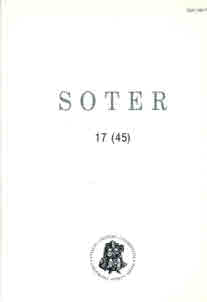Motetas – cantus mediocris. Liturginės ir kompozicinės paralelės
Motet – Cantus mediocris: the liturgical and compositional analogue
Author(s): Gražina DaunoravičienėSubject(s): Christian Theology and Religion
Published by: Vytauto Didžiojo Universitetas
Keywords: motetas; musica ecclesiastica; musica intelligible; Tridento Susirinkimas; Jono XXII bulė „Docta Sanctorum Patrum“. motet; musica ecclesiastica; musica intelligible; The Council of Trent I; the bull by Pope John XXII „Docta Sanctorum Patrum“.
Summary/Abstract: The article discusses a question of particularity in motet genre herewith highlighting the attribution to characteristics of church music (musica ecclesiasti-ca). At this point there are investigated the links of mo-tet’s historical process with novations of musical compositions in XII–XVI centuries (especially Ars Nova). An attention is given to researching the Church’s documents of that period where the motet’s propriety of sounding in the church was discussed. The study looks for reasons that determined the first crisis of motet as ecclesiastical genre at the beginning of XIV ct. as well as producing the bull „Docta Sanctorum Patrum“ by Pope John XXII. The spread of motet genre after the Council of Trent I (1545–1563) is discussed also. Straipsnyje aptariamas moteto žanro specifikos klausimas, akcentuojant jo priskyrimą bažnytinei muzikai (musica ecclesiastica). Tyrinėjamos moteto istorinės raidos sąsajos su XII–XVI a. muzikos kompozicijos novacijomis (ypač Ars Nova). Aptariami Bažnyčios dokumentai, gvildenantys klausimą, ar motetą dera atlikti bažnyčioje. Ieškoma priežasčių, nulėmusių pirmąją moteto kaip bažnytinio žanro krizę XIV a. pradžioje bei popiežiaus Jono XXII bulės „Docta Sanctorum Patrum“ paskelbimą. Aptariama moteto žanro sklaida po Tridento Susirinkimo (1545–1563).
Journal: SOTER: religijos mokslo žurnalas
- Issue Year: 44/2005
- Issue No: 16
- Page Range: 89-106
- Page Count: 18
- Language: Lithuanian

